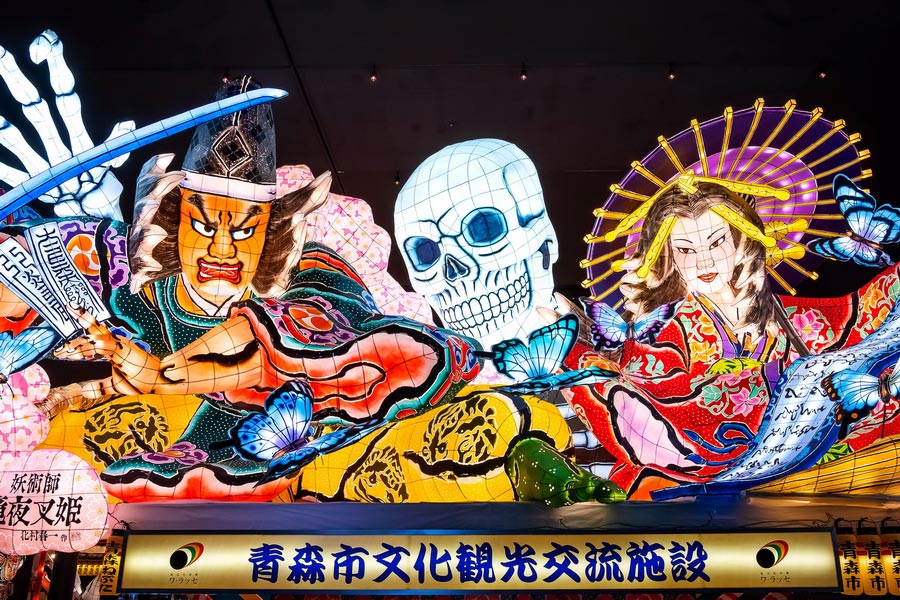
The Aomori Nebuta Matsuri (青森ねぶた祭り) Festival is one of the three great festivals of the Tohoku region. Held in the city of Aomori (青森), in the north of Honshu Island, it takes place from August 2 to 7 and stands as a vibrant symbol of summer. ‘Nebuta’ (ねぶた) means “sleepiness” in Japanese, and the festival is said to “awaken” drowsy souls in preparation for the upcoming fall harvest season. Since 1980, the festival has been recognized as an Important Intangible Folk Cultural Asset, and in 1996, the Ministry of the Environment included Nebuta Matsuri in Japan's list of 100 soundscapes.
The festival’s origins are rooted in several legends. One popular story tells of Sakanoue no Tamuramaro (坂上田村麻呂), a Heian-era Japanese warlord. During his battles in Mutsu (陸奥, present-day Tohoku region), he used taiko (太鼓) drums to lure enemies—or, according to another version, to awaken his own sleeping soldiers. To further intimidate his foes, he crafted large lanterns from bamboo and cloth, creating the illusion that demons fought alongside his warriors. This tradition inspired the festival's signature parade of illuminated paper floats and spirited dances accompanied by the rhythmic beat of drums. However, the festival is also widely believed to have ties to the Tanabata (七夕) festival and traditional rituals to ward off sleepiness during summer. Today, millions of spectators gather each year to witness this spectacular event.
As materials like washi (和紙) rice paper, bamboo, and candles became more accessible to the general public, the festival’s popularity grew. What began as simple paper lanterns eventually evolved into intricate, multi-figure compositions.
The highlight of Nebuta Matsuri is the grand parade of floats along a 3-kilometer route through Aomori’s main streets. These floats, called Nebuta, are constructed with bamboo frames and wire, covered in washi paper, and measure approximately 9 meters wide, 7 meters long, and 5 meters high. They depict heroes from Japanese legends, samurai (侍), and scenes from historical and mythical tales. Each float is meticulously handcrafted by ‘nebutashi’ (ねぶた師) artisans, who carefully design the story, composition, colors, and lighting.
In addition to the floats, the festival features Haneto (ハネト) dancers, who leap and twirl to the rhythmic sounds of taiko drums, fue (笛) flutes, and the exuberant shouts of “Rassera!” (ラッセラー). Anyone can join the dancers, provided they wear the traditional Haneto costume, which is readily available for purchase or rent in Aomori stores.
To ensure a comfortable viewing experience of the Nebuta parade, spectators are advised to purchase tickets at least a month in advance to avoid the large crowds. If rain is in the forecast, it’s best to bring raincoats, as umbrellas can obstruct the view for others. In case of bad weather, the floats are protected with special vinyl covers.
On the festival’s final day, a special parade takes place at Mutsu Bay, where selected floats are set adrift, illuminating the bay. This ritual symbolizes purification from sins and serves as a prayer for good health. The festival concludes with a dazzling fireworks display, marking the end of this unforgettable summer celebration.

